Aomori and more
- Sort by
- Popularity
- Name
-
Nambu ironware Nambu tekki
- Metal works
- Iwate

Nambu Ironware (called Nambu tekki in Japanese) is a form of metalwork produced in Morioka City and Mizusawa, Oshu City in Iwate prefecture. It is a traditional craft that was first created in the middle of the Edo period (1603-1868). The name �…
View more
-
Kumano brushes Kumano fude
- Writing tools
- Hiroshima

Kumano brushes (called Kumano fude in Japanese) are traditional craftworks produced in the city of Kumano in Hiroshima prefecture, hence the name. They are made from a wide variety of hair including goat, horse, deer, Japanese raccoon dog, weasel,…
View more
-
Satsuma ware Satsuma yaki
- Ceramic
- Kagoshima
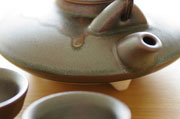
Satsuma ware (called satsuma yaki in Japanese) is a form of porcelain produced in Kagoshima prefecture. There are three types of Satsuma ware: white, black, and porcelain. Then there are six categories: tateno, ryumonji, naeshirogawa, nishimochida…
View more
-
Tsugaru lacquerware Tsugaru nuri
- Lacquerware
- Aomori

Tsugaru lacquerware (called tsugaru nuri in Japanese) is produced around the city of Hirosaki in Aomori prefecture. Lacquerware has been produced in this region since the middle of the Edo period (1603-1868), but it began to be called Tsugaru lacq…
View more
-
Iwayado traditional chest Iwayado tansu
- Wood, bamboo crafts
- Iwate

Iwayado tansu is a traditional woodwork made in the cities of Oshu and Morioka, Iwate prefecture. Tansu means chest of drawers. In addition to clothing or organization chests, daily use items like tea cabinets, book shelves, and low tables are mad…
View more
-
Tosa traditional Japanese paper Tosa washi
- Traditional Japanese paper
- Kochi
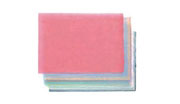
Tosa washi is a kind of traditional Japanese paper made in Kochi prefecture, both in the city of Tosa and around the town of Ino. In the past, it was used to make a holder for wallets and medicine or paper lanterns. Now it has a wide range of u…
View more
-
Joboji lacquerware Joboji nuri
- Lacquerware
- Iwate
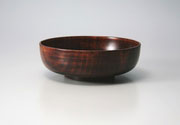
Joboji lacquerware (called Joboji nuri in Japanese) is produced in the town of Joboji in Iwate prefecture. More than 98% of the lacquer used in Japan is imported from China or other countries. The Joboji area is known as the leading producer of do…
View more
-
Hidehira lacquerware Hidehira nuri
- Lacquerware
- Iwate
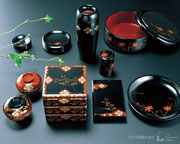
Hidehira lacquerware (called Hidehira-nuri in Japanese) is produced in the area around the town of Hiraizumi, in Iwate prefecture. The defining feature of Hidehira lacquerware is the use of gold leaf produced in the area around Hiraizumi, which re…
View more
-
Sekishu traditional Japanese paper Sekishu washi
- Traditional Japanese paper
- Shimane
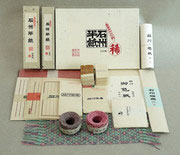
Sekishu washi is a traditional Japanese paper produced in the Iwami region of Shimane prefecture. As an ancient craft, it has a history of around 1300 years. The name Sekishu is found in writings from the Heian period (794-1185). There is also a s…
View more
-
Unshu abacus Unshu soroban
- Writing tools
- Shimane
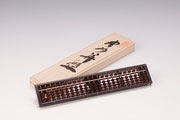
Unshu abacuses (called Unshu soroban in Japanese) are produced in the town of Okuizumo, Shimane prefecture. Japanese abacuses are traditional tools that use columns lined with beads that are quickly moved with the fingers to do calculations. They …
View more
-
Tosa cutlery Tosa uchihamono
- Metal works
- Kochi
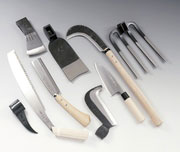
Tosa cutlery (called Tosa uchihamono in Japanese) are hammer-forged blades produced in the eastern to central part of Kochi prefecture, including the town of Ino and the cities of Kami, Nankoku, Tosa, and Susaki. Kochi prefecture was once a provin…
View more
-
Honba oshima tsumugi silk Honba oshima tsumugi
- Woven textiles
- Kagoshima
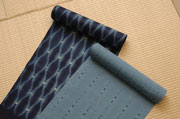
Honba Oshima Tsumugi is a fabric made on the island of Amami, Kagoshima prefecture. It is one hundred percent plain silk that has been dyed and made on handlooms like shime-bata or te-bata. This textile has deep, muted tones as it is dyed with ye…
View more
-
Iwami ware Iwami yaki
- Ceramic
- Shimane
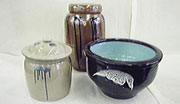
Iwami ware (called Iwami yaki) is a type of pottery produced around the city of Gotsu, Shimane prefecture. Iwami ware is strong, has low water absorbency and is resistant to salt, acid, and alkali which makes it suitable for storing pickled plums …
View more
-
Fukuyama Koto (Japanese Harp) Fukuyama koto
- Other crafts
- Hiroshima
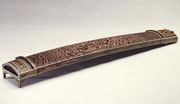
Fukuyama koto is a Japanese harp, koto, produced in Fukuyama, Hiroshima prefecture. Most of the koto produced in Japan are made in Fukuyama, which is where the coastal view of the city inspired one of the most well-known koto songs, Haru no Umi (S…
View more
-
Kawanabe Buddhist altar Kawanabe butsudan
- Household Buddhist altars
- Kagoshima
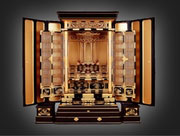
Kawanabe Buddhist Altars (called Kawanabe Butsudan in Japanese) are made in the Kawanabe area of Minamikyushu, Kagoshima prefecture. There is a specific type of altar called gamado that is unique to this craft. Gama means cave in the Kagoshima dia…
View more
-
Miyajima woodwork Miyajima zaiku
- Wood, bamboo crafts
- Hiroshima
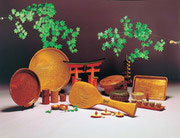
Miyajima Woodwork (called Miyajima zaiku in Japanese) are woodwork products made in Miyajima, Hatsukaichi, Hiroshima prefecture. Miyajima Island, one of the Three Views of Japan*, has long been nicknamed the "Island of Gods", while Hatsu…
View more
-
Hiroshima Buddhist altar Hiroshima butsudan
- Household Buddhist altars
- Hiroshima
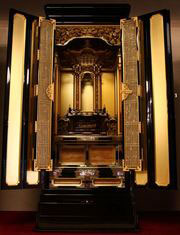
Hiroshima Butsudan are golden Buddhist altars mainly produced in Hiroshima City, Hiroshima Prefecture. The Buddhist sect, Jodo Shinshu has been widely worshipped in Hiroshima since ancient times, and many golden altars recommended by the sect were…
View more
-
Kawajiri brushes Kawajiri fude
- Writing tools
- Hiroshima

Kawajiri Brushes, called Kawajiri Fude in Japanese are mainly used for calligraphy and they are produced in the town of Kawajiri in the east of the city of Kure, Hiroshima prefecture. This town, lying at the foot of Mt. Noro and fronting onto the …
View more
-
Izumo stone lanterns Izumo ishidoro
- Stonework
- Shimane
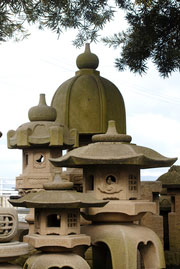
Izumo stone lanterns are stone lanterns produced in the city of Sakai Minato in the Tottori prefecture, and in the cities of Matsue and Izumo in the Shimane prefecture. They are made of Kimachi stone, fine-grained tuffaceous sandstone quarried fro…
View more
- 1

































































































































































































































































































